Here is something we don’t come across everyday. Not only a very rare Porsche 959, but one of the original prototypes Porsche used for development testing of the components that would be fitted to these technological marvels. The ad below can tell you the specific history of this prototype so I won’t regurgitate that here, but the short version is that this prototype was involved in ABS and tire testing at the high-speed ring in Nardo, Italy. Once 959 production was completed and the prototype was retired from testing service it was returned to the Porsche factory for a full refurbishment before making its way to its first private owner. Its ownership history appears to be fully documented, with much of that history spent in collections in Japan, prior to its current availability. The 959, of course, is one of Porsche’s most historic cars, most famously for the way in which it challenged the Ferrari F40 for supercar supremacy in its day. The two car makers took very different approaches to their supercars with Porsche following its generally tack of combining the best of luxury, technology, and performance in a single package while the F40 stripped out seemingly everything to offer the purest driving expression Ferrari could manage in a road car. While never really the prettiest of machines, the 959 served as a testament to Porsche’s engineering capabilities and provided a testing bed for many features that would make their way to the 911 over the years that followed. The 959 prototypes, like the one seen here, were built off of the 930 chassis and used in a variety of development settings. Reportedly 29 total were built and it is believed that 10 have survived. For collectors with a keen interest in Porsche history, I would imagine the opportunity to have one of those prototypes would be tough to pass by.
CLICK FOR DETAILS: 1985 Porsche 959 Prototype on Art and Revs
Year: 1985
Model: 959 Prototype
Engine: 2.85 liter twin-turbocharged flat-6
Transmission: 6-speed manual
Mileage: 400 km
Price: Inquire
The Porsche 959 is one of these cars you cannot make a short story about them. This is the most advanced road Porsche ever built and one of the most impressive in the automotive history. « Porsche engineers were given a goal and set free, the 959 put Porsche on the map when it came to innovative automotive technology. There were 934s and 935s, and even the 956/962, but to put it all together in a street car was unheard of. It was a major factor in moving Porsche’s racing prowess from the track to the street. ». How come a better explanation from the 959’s genesis could be ? This is the one from Dieter Landenberger, the head of Porsche historical archives.
In 1981 there was a big change at the head of Porsche with the replacement from Ernst Fuhrmann by Peter Schultz, a new direction and strategy were given then. Fuhrmann in the mid 70s thought the 911 was going to an end and stopped its development to focus on the front engined cars ( 924/928/944 ) but Schultz thought very different. In 1981 he gave the green light to work on the project of a « Super » 911 with the aim of building a Group B racing version complying with the all-new FIA regulations. The car was designed and built at the Porsche Motorsport department at Weissach and a prototype called « Gruppe B » shown at the 1983 Frankfurt show. It was an immense success with its amazing specifications and design, many though this could never be turned into a road car. It took another two years of development and testings to have the production car ready and to list a few of the « world premieres » it had : four wheels drive, ABS 4 channels, twin turbos, tyre pressure monitoring, adjustable torque balance front/rear from 20 to 80%, 17 inches wheels, adjustable ride height, 6 speeds gearbox and so on. The 959 was so advanced technologically that it immediately sat new standards in terms of performance and drivability. The production car launched in 1986 had 450 HP and 317km/h as top speed and ran the standing km in only 21,7 sec, beating the 288 GTO by 2secs. Porsche always have the habit of validating a new technology via Motorosport and in 1986, Jacky Icks won the Paris – Dakar race and René Metge / Claude Ballot Léna won their class at Le Mans and finished 7th OA with race prepared 959s, which other car did it ? The fabulous 959 is the first step and rolling laboratory of the 911’s rebirth. According to Porsche only 292 of them were built ( as per comparaison Ferrari built 1311 F40s ) and all sold on pre order. This is one of the rarest Porsche ever built and probably the most charismatic of their road cars.
Price : InquireFor more details, contact us directly on +352 661 700 777.
This is a quite a unique opportunity in a dealer career to offer a Porsche factory prototype, considering they normally don’t come to the market, being destroyed or keep at the museum. This mind boggling 959, chassis number WPOZZZ93ZFS010067 was built in 1985, given the internal code « V1KOM » and registered BB-PW481. In 1985 Helmutt Bott ( head of the 959 development ) has taken 29 930 chassis from the Porsche factory to turn them in Weissach ( Porsche Motorsport dept ) into the 959 Pre-production prototypes and these were called « F,N or V ». These 29 prototypes were the latest ones and used for media coverage, crash tests and road tests. This car is one of the the 7 « V – Series » which were assigned to the road tests, this particular one was used for ABS and tyre development. Unfortunately most of the 29 Prototypes were destroyed and scrapped at the end of the 959 program.
« 10067 » is one of the 4 959 prototypes survivor and one of the only two road going ones. Interestingly enough, the first owner was Professor Tachio Saito, who happened to be a close friend of Ferry Porsche. He noticed chassis 10067 during a visit to the factory whilst translating a book that Dr Porsche had written (Helmut Bott’s personal 959 was the preceding chassis, number 10066). As the founder of the Porsche Owners’ Club of Japan, as well as its first president, Professor Saito was more than qualified as one of Porsche’s preferred customers. A copy of factory correspondence, dated 4 December 1989 and addressed to Saito, refers to certain tasks to be undertaken by the factory prior to his acquisition of this prototype. The letter was written by Herr Willrett, believed to be Elmar Willrett, who was a Porsche engineer who was deeply involved in the development of both the 935 and 935 racing engines and who worked under Rolf Sprenger in the « Sonderwisches » (Special Wishes) Program. The document suggests that this car was to be prepared for display purposes, with functional brakes and steering. Once an agreement was settled, Porsche A.G. completed the restoration of the car, and after 16 months, Professor Saito took delivery of his prototype 959.
The professor maintained the 959 for only a short period of time, until noted collector Hideyasu Ohba, of Tokyo, Japan, acquired it for his collection of historic Porsches. In 2000, Mr Ohba sold this car to Minoru Miura, of Chiba, Japan. In 2006, still in Japan, the 959 was then acquired by Mr Shigeru from the Miura Collection. The car went to another 2 hands before coming up to the market via Art & Revs.
Being an original Protoype, this car comes with its pre-production magnesium wheels, « Denloc » Dunlop tires, brakes and some lightweight panels. All the production 959s were delivered with Bridgestone RE71 tires, the Dunlops were not retained though they incorporated a world premiere with a kind of « Run Flat » technology. The car is now only 400km and can only be described as being in new condition. It is fully working and was the subject to a recent overhaul and driven for 5 km.
Porsche factory no longer releases any Prototype to the public, this is a unique opportunity to acquire one. Not only it is a Porsche prototype, it doesn’t get any better than owning « THE » 959 one.
Determining the value of a car like this is always going to be difficult. Naturally, it’s entirely of interest to collectors and I suppose if someone really felt he had to have it, then he might be willing to pay significantly for it. Fortunately, we have some benchmarks since this 959 Prototype has been auctioned each of the last two years. In 2013 it was auctioned in Arizona for $440K and then last year it was auctioned in Monaco with a selling price of €476K (~ $520K). Not bad for a one year return. It’s also quite a bit less than the prices we see for a true 959 so as a significant piece of Porsche history that’s not really all that bad. With so few in existence and the 959 itself being such a valuable and important commodity I can’t imagine this one will be around for long, and rather than coming up for sale each year some collector may simply snap it up as a centerpiece of a fine Porsche collection and hold onto it long term.
-Rob

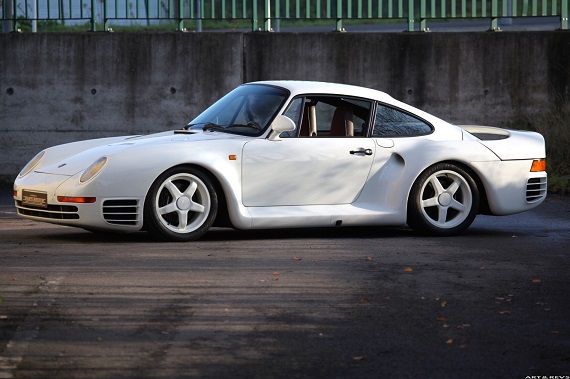
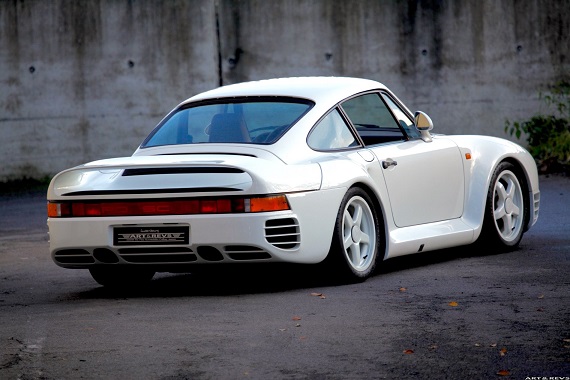
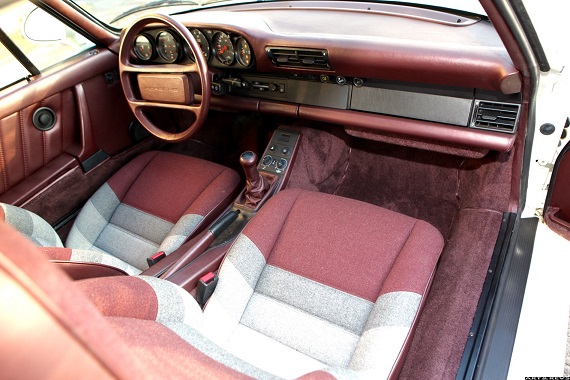
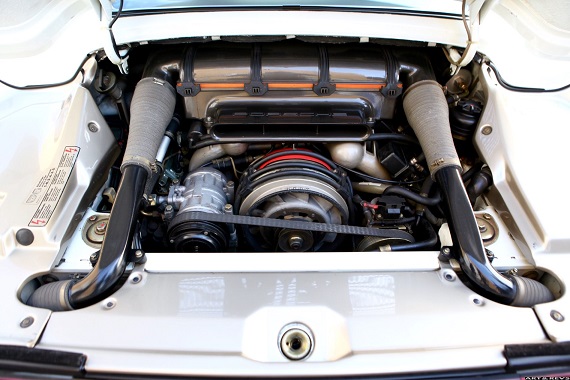



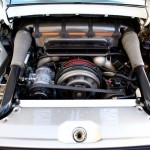


How could they have gotten the exterior so right but the interior so wrong?
Although technologically amazing for the time, they always had a certain “Look honey, I melted the 930 Turbo” appearance to me. I guess I shouldn’t comment since I don’t have a cool $500K to blow on this ice cube.
The interior is stunningly period correct. I think it looks even better with the tweed material seats that this car has as opposed to the leather in the Komfort version.
I have seen and touched several of these cars but sadly never had the chance to actually drive one. They were a technological tour de force when they hit the market. I agree they’re not the best looking 911 variant ever made but that’s not important when you’re behind the wheel. This was the baddest car on the planet and it had a pretty long reign as far as world beaters go.
@vic… what would you do with 1/3rd of this car? I say 1/3rd because I have seen these cars change hands recently north of $1mm. With this being a pretty special one I am guessing it sells for the $1.5mm area so $500k buys about 1/3rd
Eh, I have always loved the exterior of these. It looks the business.